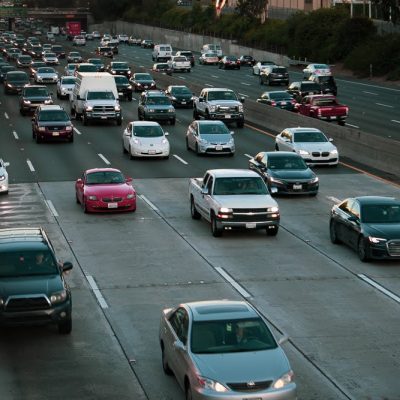
Fatal Accident Trends on I-20


Interstate 20 (I-20) stretches over 1,500 miles from West Texas to South Carolina, linking major cities such as Dallas, Jackson, Birmingham, and Atlanta. For millions of drivers, it serves as a vital east–west artery across the American South. Yet beneath that utility lies a troubling pattern: a consistent rate of severe and fatal crashes.
While improvements in road design and enforcement have reduced overall crash severity in some corridors, I-20’s mix of urban congestion, rural expanses, and unpredictable weather still produces a dangerous environment. In certain states—particularly Texas, Louisiana, and Georgia—fatal collisions have spiked during peak travel seasons, underscoring how geography and behavior intertwine to shape safety outcomes.
Understanding the Patterns Behind I-20 Fatalities 
Over the past decade, fatal crashes on I-20 have claimed thousands of lives, with certain stretches repeatedly ranking among the most dangerous in the country. According to the National Highway Traffic Safety Administration (NHTSA), the estimated number of people injured on our roadways increased in 2023 to 2.44 million, rising 2.5 percent from 2.38 million in 2022.
Examining the past decade of crash reports reveals clear themes. Many fatal crashes on I-20 follow predictable patterns, involving the same factors time and again. High speeds, driver distraction, impaired driving, and fatigue remain the most common contributors.
Speed and spacing are especially critical on this corridor. The long stretches of I-20 through Texas and Mississippi encourage faster travel, but reaction times decrease drastically above 70 mph. In multi-vehicle collisions, these higher speeds often mean greater injury severity and reduced survival rates.
Distracted driving has also risen sharply, particularly in urban areas such as Dallas and Atlanta. In rural sections, driver fatigue plays a larger role, with long-haul truckers and commuters covering hundreds of miles with limited rest opportunities.
Even impaired driving remains a persistent concern. Crash analyses from state transportation departments show that alcohol or drug impairment contributed to roughly one-third of all fatal incidents along I-20 during the past decade. Despite awareness campaigns and increased patrols, nighttime crashes involving impaired drivers continue to dominate local fatality reports.
Where and When Fatal Crashes Happen Most
Geographically, the distribution of fatalities on I-20 isn’t uniform. Certain corridors experience consistently higher crash rates due to traffic volume, roadway design, and enforcement gaps.
- Texas (Midland to Fort Worth): Long, flat stretches encourage speeding and lane drifting. Sudden slowdowns from congestion frequently lead to rear-end collisions at high speeds.
- Louisiana (Shreveport to Monroe): Narrow shoulders and heavy truck presence increase the risk of multi-vehicle pileups.
- Mississippi and Alabama: Rural terrain with limited lighting and extended gaps between exits make nighttime crashes more deadly.
- Georgia (Augusta to Atlanta): Urban density, aggressive driving, and merging traffic contribute to frequent multi-lane collisions.
Seasonal patterns also emerge. Fatalities rise in summer months, when travel volume peaks and road construction zones multiply. However, winter months see a different type of risk—fog, wet pavement, and low visibility combine to produce smaller but deadlier crash clusters.
Time of day also matters: late-night and early-morning hours between midnight and 6 a.m. account for a disproportionate number of fatal wrecks, reflecting the combined influence of fatigue and impairment.
Human and Systemic Factors Shaping the Numbers
While driver error accounts for most fatalities, infrastructure plays a major role in shaping accident statistics trends for I-20. In several states, older roadway segments on I-20 were built decades ago and have not yet been fully modernized to handle current traffic levels. Tight curves, narrow lanes, and short merge ramps continue to contribute to side-swipe and rollover crashes.
The growing presence of heavy trucks adds another layer of complexity. Freight traffic through Texas, Louisiana, and Alabama has surged, creating congestion and longer braking distances that amplify collision severity. Despite expanded enforcement of hours-of-service rules for commercial drivers, fatigue-related crashes among truck operators remain a persistent threat.
Technology is helping to mitigate some of these risks. The introduction of Intelligent Transportation Systems (ITS)—including dynamic speed limit signs, real-time traffic cameras, and automated incident alerts—has begun reducing response times and improving driver awareness. Still, human behavior remains the deciding factor in most fatal outcomes.
Lessons from a Decade of Fatal Crash Data
Analyzing ten years of accident statistics highway data along I-20 reveals both progress and persistent challenges. Overall, states like Georgia and Texas have reported modest reductions in per-mile fatality rates thanks to targeted enforcement, improved lighting, and road widening projects. Yet rural portions of Mississippi, Alabama, and Louisiana still record higher-than-average fatal crash densities per capita.
Driver demographics also shed light on these patterns. Younger drivers (ages 18–25) are disproportionately represented in high-speed and single-vehicle crashes, while older drivers (ages 65 and above) appear more frequently in failure-to-yield or lane-departure incidents. Combined, these trends point to the need for state-specific interventions that match the risks unique to each segment of I-20.
The overarching takeaway is clear: safety on I-20 depends on coordinated efforts between drivers, state agencies, and technology. Improvements in enforcement and engineering help, but lasting progress requires a cultural shift toward greater caution and accountability behind the wheel.
Moving Toward a Safer Future on I-20
The last decade of fatal crashes on I-20 tells a sobering story of progress tempered by preventable loss. While modern safety systems and law enforcement have reduced some of the most severe outcomes, excessive speed, distraction, and fatigue continue to claim hundreds of lives each year.
Drivers traveling this corridor can protect themselves by slowing down, eliminating distractions, and ensuring they’re rested before long trips. Staying updated on construction zones and weather conditions through official sources like the Federal Highway Administration’s Safety Data Portal (FHWA Highway Safety Resources) also helps reduce exposure to high-risk segments.
Call an I-20 Accident Lawyer after a Crash
If you or someone you love has been affected by a fatal or serious crash on I-20, we can put you in touch with an experienced I-20 accident attorney who can assist with investigations, insurance claims, and accountability. Legal professionals familiar with interstate collisions understand how to interpret crash data, obtain official reports, and fight for the justice victims and families deserve.
Fill out the contact form and let us to put you in touch with a skilled lawyer who will take on your case and fight for the justice and compensation you deserve after your I-20 crash.
